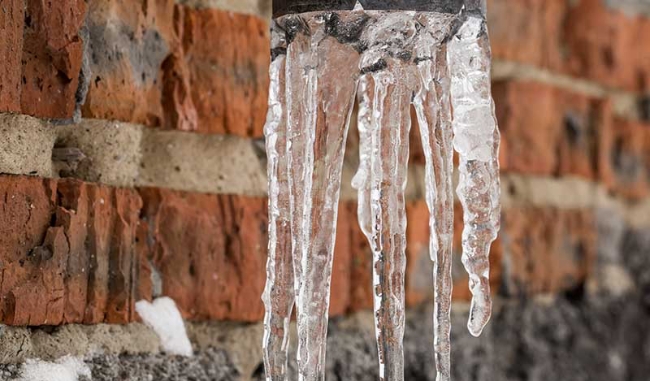Ways to Maintain Pipes from Freezing Damage: Important Tips
Ways to Maintain Pipes from Freezing Damage: Important Tips
Blog Article
This post down below pertaining to Preventing and dealing with frozen pipes is fairly engaging. You should see for yourself.

Cold weather can damage your plumbing, especially by freezing pipelines. Right here's exactly how to avoid it from occurring and what to do if it does.
Intro
As temperatures drop, the risk of frozen pipes boosts, potentially resulting in pricey repair work and water damages. Understanding just how to prevent frozen pipes is essential for property owners in chilly climates.
Recognizing Frozen Pipelines
What triggers pipelines to ice up?
Pipes freeze when exposed to temperatures below 32 ° F (0 ° C) for prolonged periods. As water inside the pipes freezes, it broadens, taxing the pipe wall surfaces and potentially creating them to burst.
Risks and damages
Frozen pipes can result in water system disturbances, property damages, and pricey repair services. Ruptured pipelines can flood homes and cause extensive structural damages.
Indications of Frozen Water Lines
Determining frozen pipes early can stop them from bursting.
How to determine icy pipelines
Seek reduced water circulation from faucets, uncommon smells or noises from pipes, and visible frost on revealed pipes.
Avoidance Tips
Insulating prone pipelines
Wrap pipes in insulation sleeves or utilize warmth tape to secure them from freezing temperature levels. Concentrate on pipelines in unheated or exterior locations of the home.
Home heating strategies
Keep indoor rooms effectively heated up, specifically areas with pipes. Open closet doors to permit cozy air to circulate around pipelines under sinks.
Safeguarding Exterior Pipes
Garden hoses and exterior taps
Separate and drain garden pipes before wintertime. Set up frost-proof faucets or cover outside taps with shielded caps.
What to Do If Your Pipelines Freeze
Immediate actions to take
If you suspect frozen pipes, keep taps available to alleviate pressure as the ice thaws. Make use of a hairdryer or towels taken in hot water to thaw pipelines gradually.
Long-Term Solutions
Structural adjustments
Think about rerouting pipelines far from exterior walls or unheated areas. Add additional insulation to attic rooms, basements, and crawl spaces.
Updating insulation
Invest in high-grade insulation for pipelines, attics, and wall surfaces. Correct insulation helps maintain consistent temperatures and decreases the threat of frozen pipelines.
Verdict
Stopping icy pipes needs positive procedures and quick actions. By recognizing the causes, indications, and preventive measures, house owners can safeguard their plumbing throughout winter.
5 Ways to Prevent Frozen Pipes
Drain Outdoor Faucets and Disconnect Hoses
First, close the shut-off valve that controls the flow of water in the pipe to your outdoor faucet. Then, head outside to disconnect and drain your hose and open the outdoor faucet to allow the water to completely drain out of the line. Turn off the faucet when done. Finally, head back to the shut-off valve and drain the remaining water inside the pipe into a bucket or container. Additionally, if you have a home irrigation system, you should consider hiring an expert to clear the system of water each year.
Insulate Pipes
One of the best and most cost-effective methods for preventing frozen water pipes is to wrap your pipes with insulation. This is especially important for areas in your home that aren’t exposed to heat, such as an attic. We suggest using foam sleeves, which can typically be found at your local hardware store.
Keep Heat Running at 65
Your pipes are located inside your walls, and the temperature there is much colder than the rest of the house. To prevent your pipes from freezing, The Insurance Information Institute suggests that you keep your home heated to at least 65 degrees, even when traveling. You may want to invest in smart devices that can keep an eye on the temperature in your home while you’re away.
Leave Water Dripping
Moving water — even a small trickle — can prevent ice from forming inside your pipes. When freezing temps are imminent, start a drip of water from all faucets that serve exposed pipes. Leaving a few faucets running will also help relieve pressure inside the pipes and help prevent a rupture if the water inside freezes.
Open Cupboard Doors
Warm your kitchen and bathroom pipes by opening cupboards and vanities. You should also leave your interior doors ajar to help warm air circulate evenly throughout your home.

As a passionate reader about Winter Plumbing Precautions: Preventing Frozen Pipes, I imagined sharing that chunk was really helpful. For those who liked our blog post if you please be sure to pass it around. We truly appreciate your readership.
Click Here Report this page